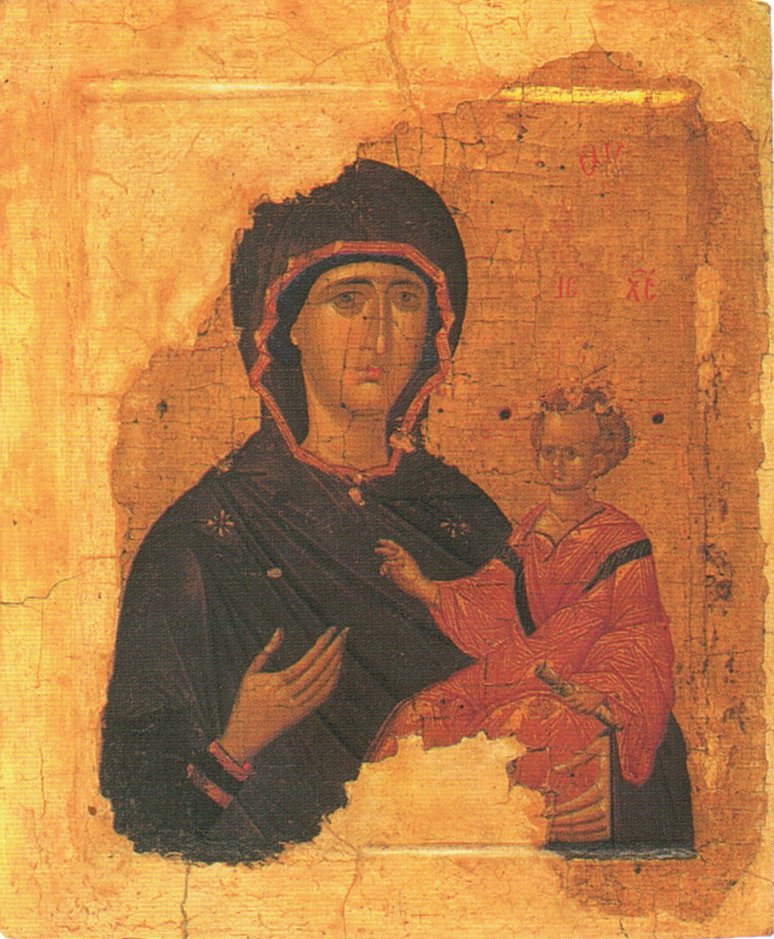
Icon of the Mother of God "Hodegetria"
Byzantium, first quarter of the 15th century
In the Virgin Hodegetria type the Virgin Mary holds Christ on her left arm and gestures toward him with the elongated fingers of her right hand, showing that he is the way to salvation, while he raises his right hand in a gesture of blessing. (The index and middle fingers are joined to refer to the two natures of Christ, and the thumb locks over the other fingers to signify the Trinity.) The name Hodegetria ("The Wayshower") refers to the Hodegon Monastery in Constantinople, which has such an icon.
Typical features of the Hodegetria include the starburst on one or both shoulders and on the part of the blue mantle that covers the forehead. In some examples a throne or a fringed mantle will be used to indicate imperial status. The Mary's frontal gaze is also a key feature of the Hodegetria type.
It is usual to put the Greek inscription MP ΘΥ on either side of Mary's portrait and IC XC over the child. These abbreviate the words for "Mother of God" and "Jesus Christ" respectively. Here MP has been lost and the other letters have faded somewhat.
Read more about Madonna and Child portraits.
Source: Wikimedia Commons